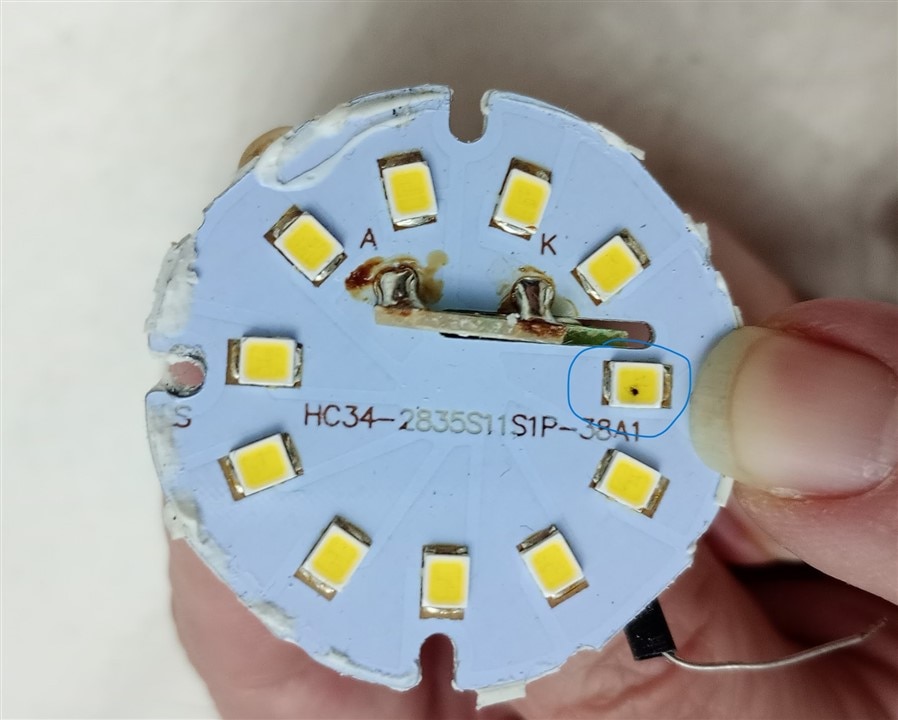My workshop areas have eight 4 foot double tube fluorescent worklights in the man-cave. I installed the 4 foot floursecent fixtures 35 years ago.
As the tubes fail, they get consolidated, and one by one empty fluorescent fixtures get replaced with LED worklights. 5 of 8 fluorescents are still in service.
One of the LED worklights failed after a couple years of service. The failure is weird, the worklight had turned into a strobe light.
Maybe the light can be repaired ?
I dunno, but the opportunity to troubleshoot, reverse engineer, and maybe even scavenge parts is too good an opportunity to pass up.
The endcaps are removed from the light fixture. The simplicity is smart. An extruded aluminum tube body, diffuser slides into it, and an LED strip is mounted on the AL extrusion.
The power supply leads were desoldered and the LED strip slide right out.
The LED strip is on a thin fiberglas pcb with 78 COB LED packages soldered in place.The LED strip is labeled with 94v.
Its easy to follow the traces to see the LED strip has 3 parallel circuits of 26 COB LEDS in series.
Since the LED fixture was strobing, the LEDs seem OK, but the power supply would collapse after being able to start.
The power supply was tucked inside the aluminum extrusion, encased in an insulated tube.
The power supply was first inspected for failed components. The parts are really packed in there.
Voila ! Nothing smoked. That black thing looks like its had an overtemp near the body. Its labeled L1, ah...an inductor.
After desoldering and removing, a closer look seems that the inductor had bitty wire leads soldered onto the stiffer component leads.
Ohm check shows its not dead shorted, and LCR meter sez its 1.86 mH. Darn, that seems reasonable.
The inductor probably isn't bad so it will have to be reinstalled onto the power supply card.
Next step is to do reverse engineering on the power supply card to identify components.
Its for sure a 120VAC 60 Hz to ~ 80Vdc (?) switching power supply, and appears to have 2 stages. I'll need to surf for info on switching power supply basics.
If anyone who has alot of design or service experience on switching power supplies, it would be appreciated to share some insights and hints :-)

